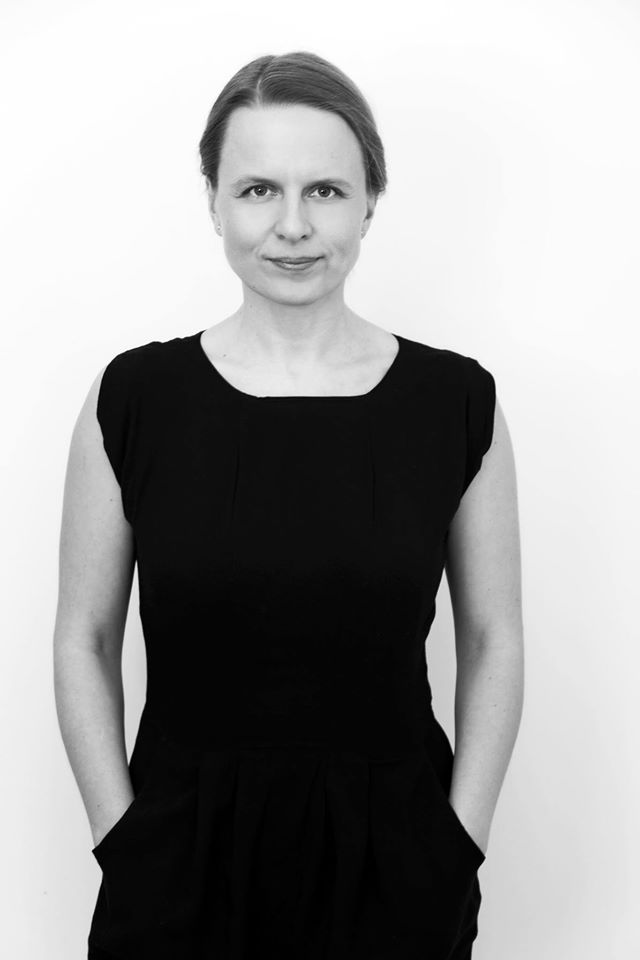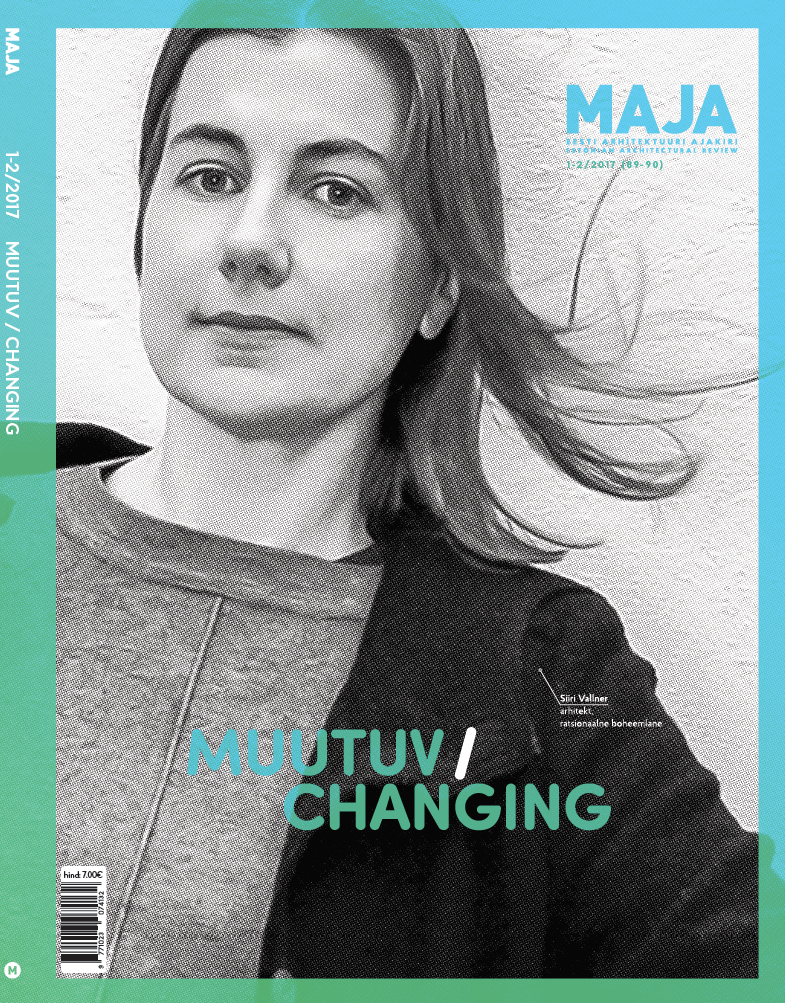Globaalsed nihked 〉 Hans Ibelings
Euroarchitecture 〉 Karro-Kalberg
Ruumiringlus 〉 Eve Komp ja Liina-Liis Pihu
PERSONA: Rational bohemian Siiri Vallner 〉 interviewed by Jarmo Kauge
PROJECT: Why do we need Tallinn Creative Hub, anyway? 〉 Maria Hansar
ESTONIAN NATIONAL MUSEUM (ENM)
The modernism of the ENM 〉 Carl-Dag Lige
Nothing special, nothing complicated 〉 Krista Aru
Interview with Lina Ghotmeh 〉 Sille Pihlak
Interview with Tomomi Hayashi and Hanno Grossschmidt 〉 Katrin Koov
Intervjuu Karin Bachmanni ja Mirko Traksiga 〉 Katrin Koov
Sisearhitektuur. Intervjuu Pille Lausmäega 〉 Katrin Koov
Püsiekspositsioon. Intervjuu 3+1 arhitektidega 〉 Katrin Koov
Soome-ugri näitus. Vestlus Jan Grapsi ja Kristian Kirsfeldtiga 〉 Triin Männik
Kuidas valmis soome-ugri näituse helikujundus 〉 Taavi Tulev
Roosi tänava ümbertegemine 〉 Karin Bachmann
Estonian Embassy in London 〉 Ann Alari
Arhitektuuri kriitilised küsimused. Vestlus Tristan Boniveriga 〉 Liina-Liis Pihu
Võistlused. Noppeid. Viimane külg.
TIME TO TALK ABOUT POLITICS
The late autumn and early winter of 2016 have been saturated with politics at many levels. The whole world followed the US elections with growing concern; they culminated in early November with a victory for Donald Trump. No one knows exactly which direction the world will go in when the controversial billionaire ascends to power. Estonia’s own government coalition was dealt a blow when a party that had been in power for the last 17 years was forced out in a November political tempest.
For Estonian architecture, the change of power may offer an unexpected opportunity because one of the pledges made by the incoming coalition was the creation of an expert council on architecture. In other words, there has been an acknowledgment at the national level of the need for architecture policy. Let’s cross our fingers that it succeeds.
This issue of MAJA presents an abridged version of a translation of a book published by Hans Ibelings and Powerhouse, Shifts, which deals with global changes in the world of architecture. The world as a whole is beset by several problems: the climate is changing, resources are becoming exhausted, extremist movements are rearing their heads and major changes are taking place in geopolitics, the economy, ecology and demographics. All this has an effect on architecture as well, bringing changes within the discipline and among the various sectors.
One way in which the Estonian national policy on spatial planning can be assessed is through use of European support, Merle Karro-Kalberg gives an overview of this, providing a critique of the lack of a clear system and quality requirement. A heating plant renovated with European and city of Tallinn funds, which was named Kultuurikatel, Creative Hub in English, but which shed its cultural skin completely in the end, is covered by the Hub’s first project manager, Maria Hansar.
The person profiled in this issue is Siiri Vallner – an architect who does her work in uncompromising fashion, with heart and soul and who has dedicated nearly her whole life to architecture. In the portrait piece, she is interviewed by Jarmo Kauge, shedding light on how this intriguing personality became an architect and exploring her objectives and values in her work as well as the contradictions and challenges. It also touches on the problems of architecture in Estonia and ways of solving them.
A separate section of stories covers the new Estonian National Museum building, which was completed in Raadi near Tartu this fall. Carl-Dag Lige gives insight into the context of the building. The heart of the project and the representative of the contracting authority, Krista Aru, writes about faith, confidence and the collaboration that made completion possible. MAJA interviews the architects who contributed to the design and other architects who contributed to the completion of the museum complex.
We also introduce the calling card of the Estonian state in London, the embassy building recently renovated according to a project by KAOS Architects. The embassy was visited by the writer, journalist and translator Ann Alari, who resides in London. A selection of recent architecture competitions and events is also covered.
This issue will be the last one during my time as editor. In the New Year, MAJA will continue in a new format with new staff. I thank all readers and wish the next team all the best!
Editor-in-chief Katrin Koov
June, 2017






